
JUNO experiment: detector status and physics opportunities
A. Barresi 1
1 INFN, Milano-Bicocca, 20126 Milan, Italy
Show AbstractThe Jiangmen Underground Neutrino Observatory (JUNO) is a multi-purpose neutrino experiment cur- rently under construction in South China. The detector consists of a 35.4 m diameter acrylic sphere filled with 20 000 t of ultra-pure liquid scintillator and makes JUNO the largest liquid scintillator-based, under- ground neutrino observatory capable of addressing many important topics in different fields of neutrino physics. The primary goal of JUNO is to determine the neutrino mass ordering with a significance greater than 3 − 4σ after six years of data taking and to perform high-precision measurement of neutrino oscilla- tion parameters. This will be achieved by exploiting the electron antineutrinos emitted by the Yangjiang and Taishan nuclear power plants located about 53 km away from the experimental site, together with the precise measurement of the reactor antineutrino energy spectrum provided by its satellite detector, the Tais- han Antineutrino Observatory, located at about 30 m from a reactor core of the Taishan plant. The JUNO central detector will be equipped with 17612 20-inch and 25600 3-inch photomultiplier tubes to provide a photocathode coverage of 78% and an energy resolution better than 3% at 1 MeV with an absolute energy scale uncertainty lower than 1%. The central detector hall will be filled with ultra-pure water to shield the environmental radioactivity and act as a water Cherenkov detector for cosmic muons tagging. Thanks to its excellent characteristics in terms of an unprecedented active mass and excellent energy resolution, the extensive physics program of JUNO comprises also solar neutrinos, atmospheric neutrinos, supernova neutrinos, and geo-neutrinos, as well as beyond Standard Model physics topics such as nucleon decay. The detector construction is expected to be completed in 2024. In this paper I review the current status of the detector and the physics topics covered by JUNO.
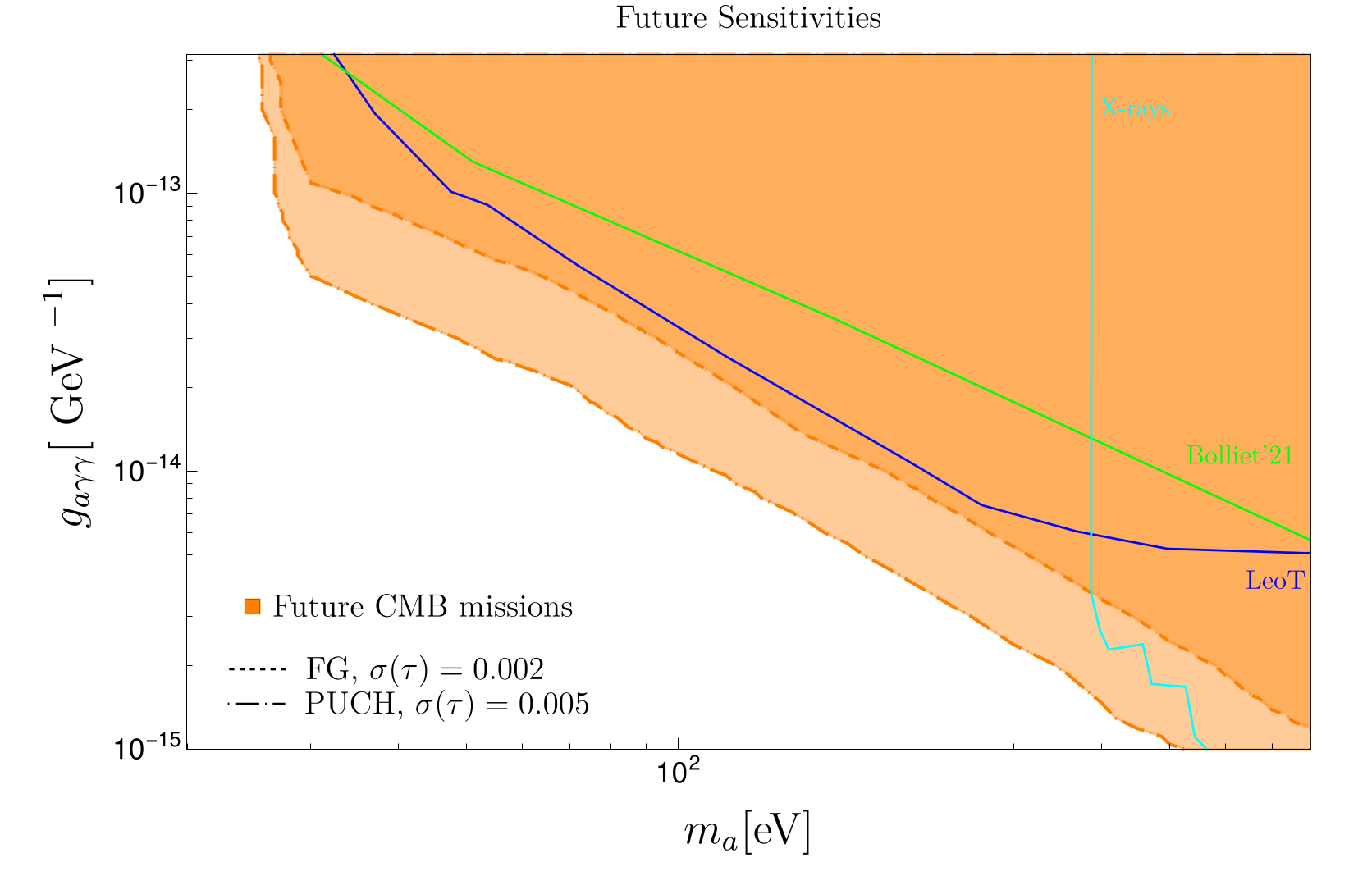
CMB and Lyman-α constraints on dark matter decays to photons
Francesco Capozzi 1, 4, Ricardo Z. Ferreira 3, Laura Lopez-Honorez 2, 6, Olga Mena 5
1 Dipartimento di Scienze Fisiche e Chimiche, Universita degli Studi dell’Aquila, 67100 L’Aquila, Italy 2 Service de Physique Theorique, Universite Libre de Bruxelles, C.P. 225, B-1050 Brussels, Belgium 3 Institut de Fı́sica d’Altes Energies (IFAE) and Barcelona Institute of Science and Technology (BIST), Campus UAB, 08193 Bellaterra, Barcelona, Spain 4 Istituto Nazionale di Fisica Nucleare (INFN), Laboratori Nazionali del Gran Sasso, 67100 Assergi (AQ), Italy 5 Instituto de Fı́sica Corpuscular (IFIC), University of Valencia-CSIC, Parc Cientı́fic UV, c/ Catedrático José Beltrán 2, E-46980 Paterna, Spain 6 Theoretische Natuurkunde & The International Solvay Institutes, Vrije Universiteit Brussel, Pleinlaan 2, B-1050 Brussels, Belgium
Show AbstractWe improve the CMB bounds on sub-keV dark matter and extend previous bounds from Lyman-α obser- vations to the same mass range, resulting in new and competitive constraints on axion-like particles (ALPs) decaying into two photons.

Discrete origins of matter
Gauhar Abbas 1
1 Department of Physics, Indian Institute of Technology (BHU), Varanasi 221005, India
Show AbstractWe discuss models of the flavour problem and dark matter based on the discrete Z N × Z M × Z P flavour sym- metry. A new class of dark-matter emerges out of these models, which is defined as the flavonic dark matter. An ultra-violet completion of these models based on the dark-technicolour paradigm is also presented.
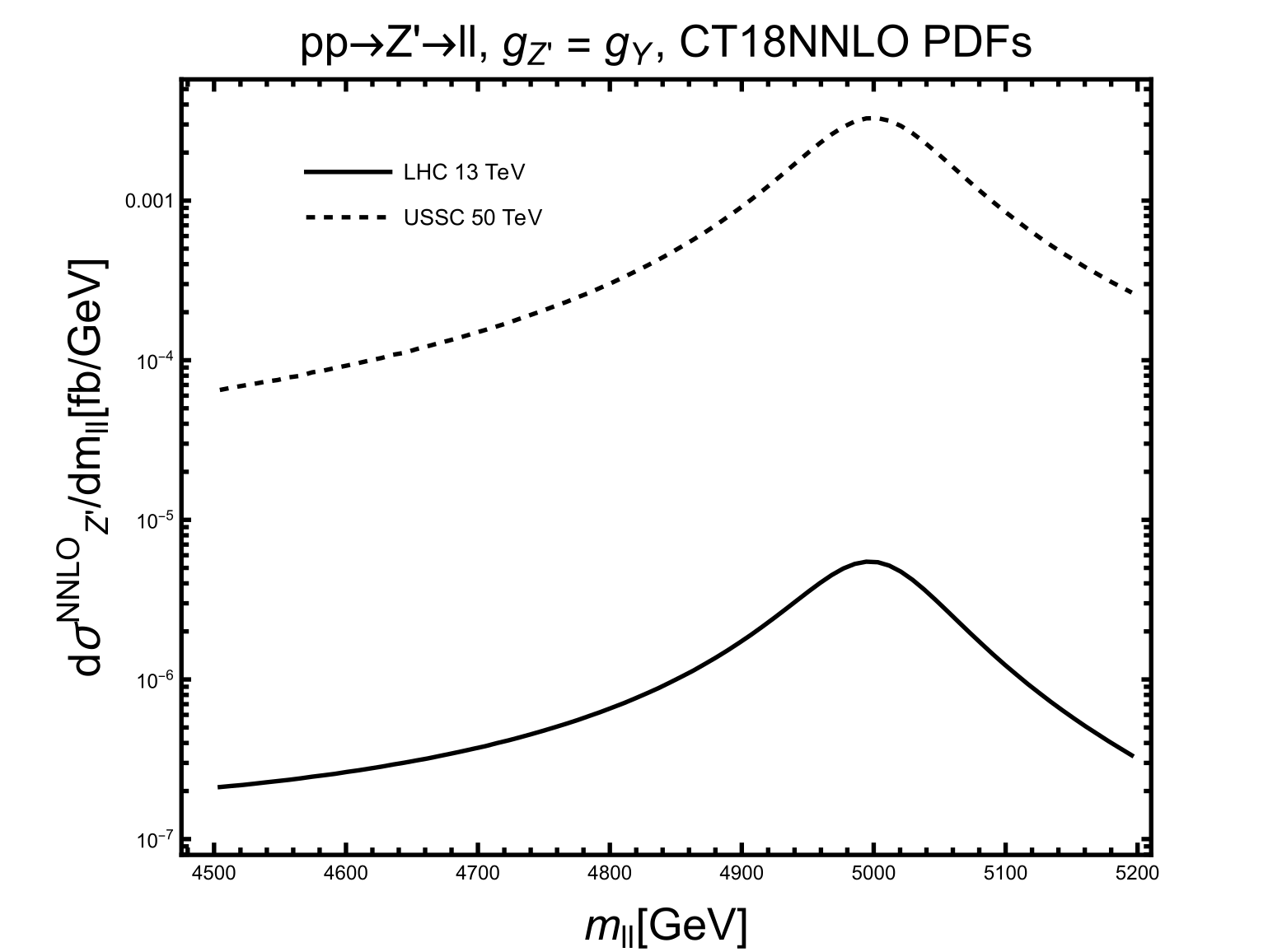
String Derived Z ′ Model at an Upgraded Superconducting Super Collider
Alon E. Faraggi 1, Marco Guzzi 2, Andrew McEntaggart 2, 3
1 Department of Mathematical Sciences, University of Liverpool, Liverpool L69 7ZL, UK 2 Department of Physics, Kennesaw State University, Kennesaw, GA 30144, USA 3 Department of Physics, Georgia Institute of Technology, Atlanta, GA 30332, USA
Show Abstractt The future of collider physics is under investigation. With the High Luminosity LHC program lasting until the late 2030s, the next machine in the energy frontier is envisioned to appear in 30–40 years, which may be too far into the future to sustain the field. In this paper we explore the physics potential of an Upgraded Superconducting Super Collider (USSC). The Original Superconducting Super Collider (OSSC) was planned to operate at 20TeV beam energy, and with improved magnet technology and/or longer tunnel, one may envision that it can be extended to 25–30TeV beam energy. Given that the decision on the OSSC construction took place in Autumn 1988 and it was planned to start operation in the 1996-1999 period, an USSC can be constructed 10–15 years from construction and fill the gap between the end of HL– LHC and the future envisioned machines. While the main mission of the USSC will be to test the Standard Model and its electroweak and strongly interacting sectors, as a specific example we illustrate the invariant mass distribution at NNLO in QCD for a 5 TeV Z ′ in the string derived Z ′ model.
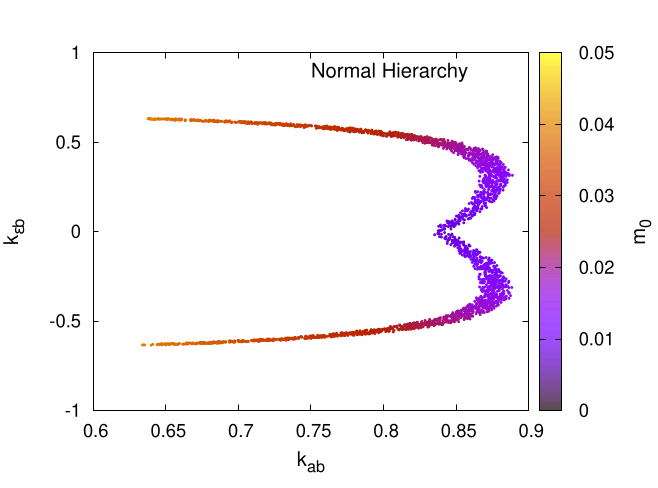
Domain Walls in the A 4 flavored NMSSM
Mohamed Amin Loualidi 1, Salah Nasri 1, 2
1 Department of physics, United Arab Emirates University, Al-Ain, UAE 2 The Abdus Salam International Centre for Theoretical Physics, Strada Costiera 11, I-34014, Trieste, Italy
Show AbstractIn this work, we study the phenomenology of neutrinos and the formation of cosmic domain walls in the NMSSM extended by an A 4 × Z 3 flavor symmetry. Neutrino masses result from the type I seesaw mechanism using only two flavon fields and the NMSSM singlet S while their mixing is of Trimaximal mixing form. We perform our phenomenological study in the normal mass hierarchy where we find that observables like m ββ , m β , and ∑ m i can be tested by future experiments. Due to the difference between the A 4 subgroups that undergo spontaneous breaking in both the charged lepton and neutrino sectors, the resulting domain walls in each sector exhibit distinct structures. We delve into the details of the breaking patterns within these two sectors, and we introduce a nuanced geometric representation for them. To tackle the domain wall problem, we explore a well-established method involving the explicit breaking of the flavor symmetry. This is achieved through the introduction of Planck-suppressed operators induced by supergravity.
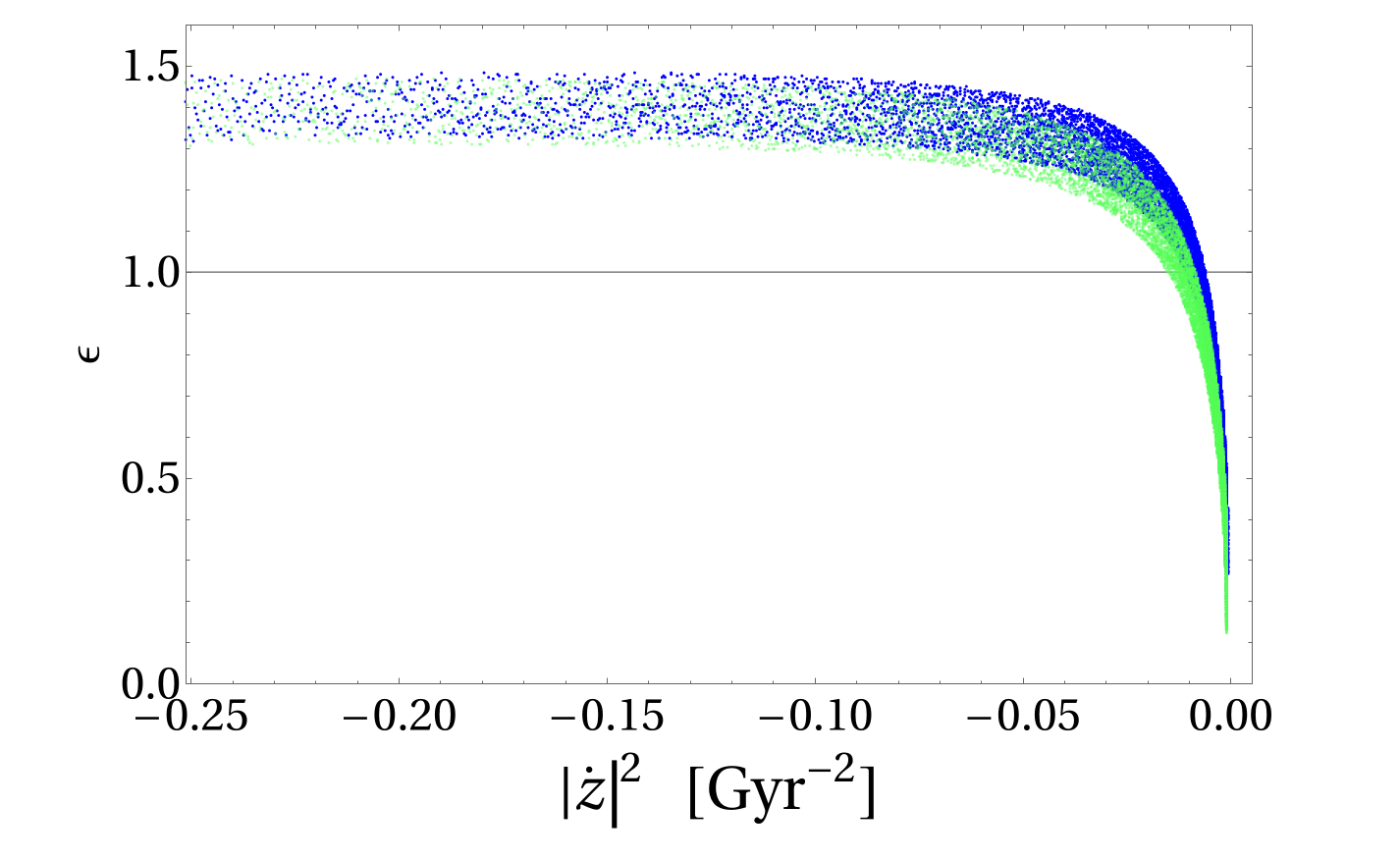
Interpreting the Cosmic History of the Universe Through N = 2 D = 5 Supergravity
Safinaz Salem 2, Moataz H. Emam 1
1 Department of Physics, SUNY College at Cortland, Cortland, New York 13045, USA 2 Department of Physics, Faculty of Science, Al Azhar University, Cairo 11765, Egypt
Show AbstractThrough modeling the universe as a symplectic 3-brane embedded in the bulk of N = 2 five-dimensional ungauged supergravity theory, the entire evolution of the universe can be interpreted from inflation to late-time acceleration without introducing an inflaton nor a cosmological constant.
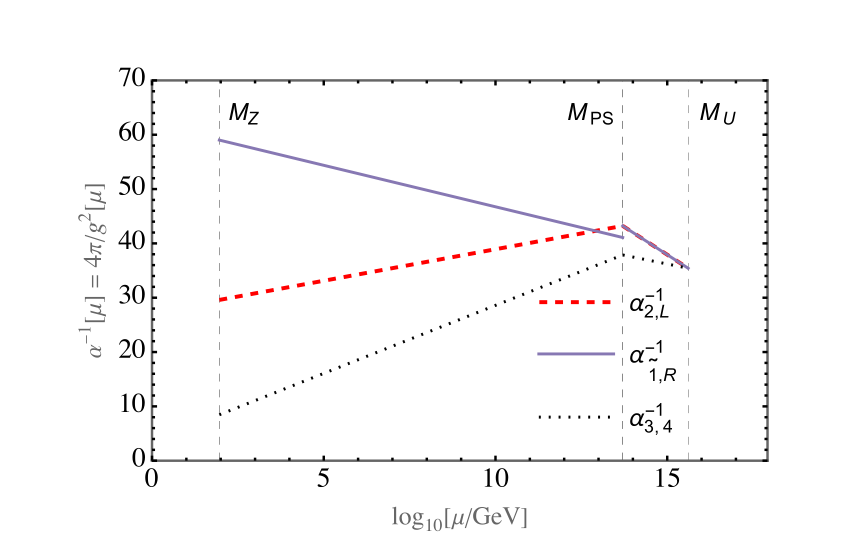
B-flavour and a µ anomalies with S 1 leptoquark in SO ( 10 ) Grand Unification
Ufuk Aydemir 1
1 Department of Physics, Middle East Technical University, Ankara 06800, Türkiye
Show AbstractThe relatively long-existing B-flavour anomalies at the LHC searches have caused excitement in the last decade as possible indications of new physics beyond the Standard Model. Even though the recent news that one of these anomalies (namely the R K (∗) anomaly) appears to have dis- appeared from the data has caused some readjustments in our expectations, the still-existing anomalies in experiments remain to provide some semblance of anticipation for new physics. Among these are the B-decay anomaly called R D (∗) and the almost two-decade-old measure- ment problem of the muon magnetic moment (a µ ). In this conference paper, I will discuss the S 1 ( 3, 1, − 1/3 ) leptoquark solution of these anomalies in SO ( 10 ) grand unification.
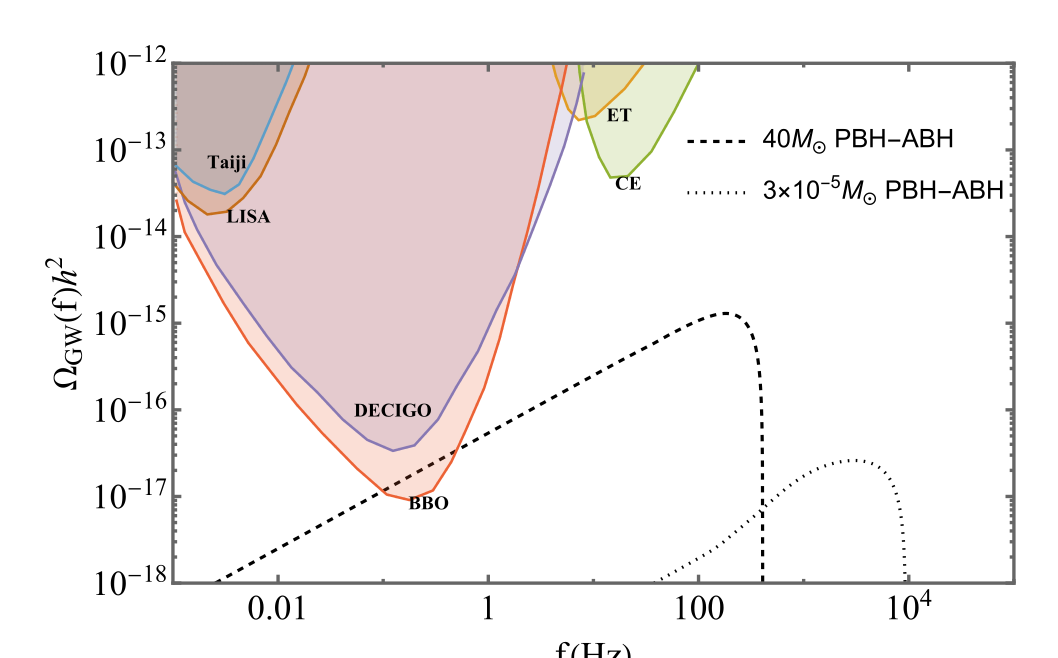
Gravitational waves as a probe of origin of the primordial black holes
Indra Kumar Banerjee 1, Ujjal Kumar Dey 1
1 Department of Physical Sciences, Indian Institute of Science Education and Research Berhampur, Transit Campus, Government ITI, Berhampur 760010, Odisha, India
Show AbstractWe consider the cumulative stochastic gravitational wave background as a method to extract information regarding the origin of primordial black holes. For this, we consider a mechanism such as the first order phase transition, which can create stochastic gravitational waves background as well as primordial black holes. These primordial black holes can interact among themselves, and other astrophysical black holes to create a secondary gravitational wave. We combine these gravitational wave backgrounds to obtain the cumulative background. We also show the dependence of this cumulative background on the temperature of the phase transition.
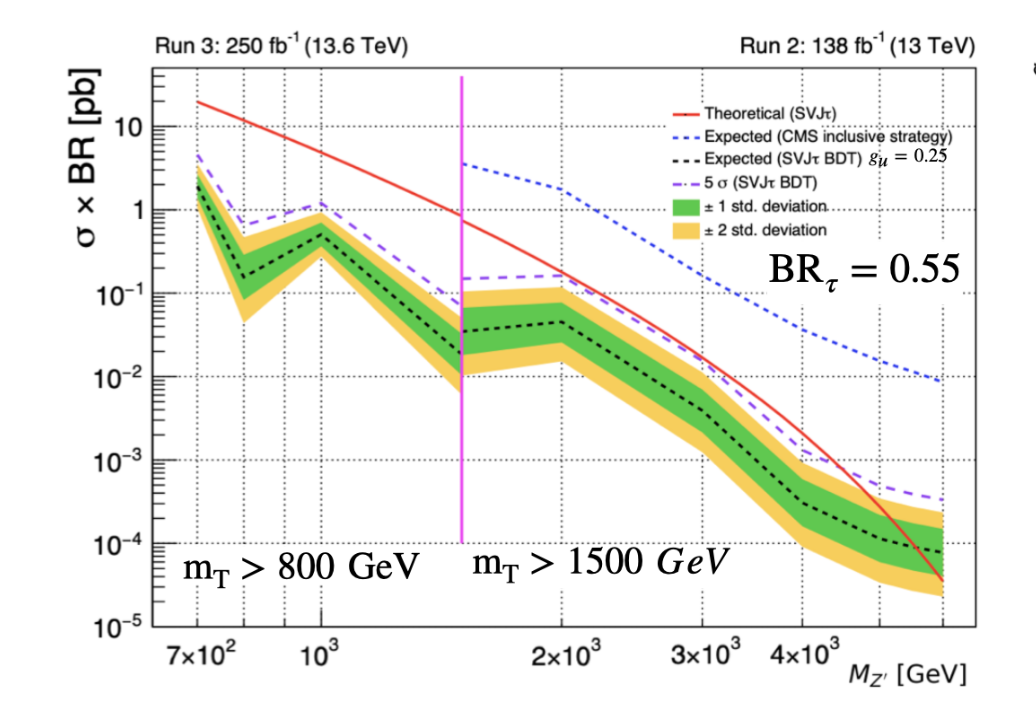
Leptons-enriched signatures for semi-visible jets
Cesare Cazzaniga 1
1 ETH ID Zürich, Institute for Particle Physics and Astrophysics, CH-8093 Zürich, Switzerland
Show AbstractThe Hidden Valley scenario proposes alternative BSM models leading to new loosely constrained collider signatures, and possibly explain the nature of Dark Matter and solving the hierarchy problem. Under the assumption of a QCD-like confining dark sector, novel experimental signatures emerge, characterized by sprays of particles resembling hadronic jets containing stable invisible dark matter bound states. These semi-visible jets have been studied theoretically and experimentally in the fully hadronic signature where the unstable composite dark matter can only decay promptly back to Standard Model quarks. We present two simplified models allowing the decays of the unstable dark bound states to electrons and muons, as well as enhanced decays to tau leptons. The resulting signature is characterised by non-isolated leptons in- side semi-visible jets. We show the constraints on our models from existing CMS and ATLAS searches, and propose possible realistic analysis strategies leveraging the enhanced leptonic content of these anomalous jets.

Solar neutrino constraints on U(1) ′ models via coherent elastic neutrino-nucleus scattering
M. Demirci 1, M. F. MustaminM. F. Mustamin 1
1 Department of Physics, Karadeniz Technical University, Trabzon, TR61080, Türkiye
Show AbstractWe examine new physics from U ( 1 ) ′ gauge symmetry via coherent elastic neutrino-nucleus scattering (CEνNS) utilizing solar neutrinos. Particularly, we focus on an additional vector boson with an associated U ( 1 ) B − L , U ( 1 ) B − 3L e , U ( 1 ) B − 3L µ , and U ( 1 ) B − 3L τ gauge symmetries. These models have different fermion charges, which determines their contributions to the CEνNS process. We show effect of these models by incorporating them in signal of the SM using solar neutrino flux. We place new constraints on these models using the recent CDEX-10 data. Our findings indicate that there are some improvements from previous limits.
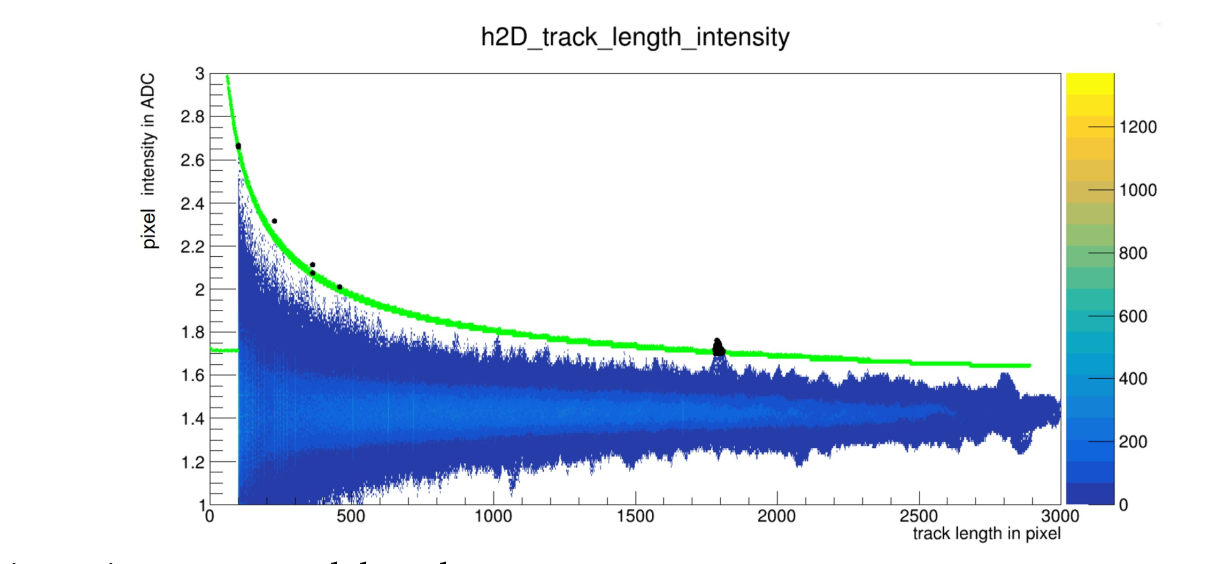
Imaging with single photon sensitive camera
Zhimin Wang 2, 3, 1
1 State Key Laboratory of Particle Detection and Electronics 2 Institute of High Energy Physics, Beijing 100049, China 3 University of Chinese Academy of Sciences, Beijing 100049, China
Show AbstractAn imaging measurement will be discussed with a single photon sensitive and low noise camera aiming to a new paradigm in the optical readout of scintillation detectors. The features of the single photon sensitive camera will be characterized and demonstrated with a measurement on double-slit Young’s interference in single photon mode. This study is also trying to measure and identify muon tracks from 2D images captured by CsI(Tl) crystal scintillator detectors. The proposed approach allows for direct observation of muon tracks with a reasonable signal-to-noise ratio, eliminating the need for additional amplification or external light sources. With further enhancements to the analysis and setup, this algorithm offers an innovative method for particle measurement in low-photon environments and enables precise direction measurement of scintillation detectors.
Swampland Program, Extra Dimensions, and Supersymmetry Breaking
Luis A. Anchordoqui 6, 5, 2, Ignatios Antoniadis 1, 7, Dieter Lüst 3, 4
1 Laboratoire de Physique Théorique et Hautes Énergies - LPTHE, Sorbonne Université, CNRS, 4 Place Jussieu, 75005 Paris, France 2 Department of Astrophysics, American Museum of Natural History, NY 10024, USA 3 Max–Planck–Institut für Physik, Werner–Heisenberg–Institut, 80805 München, Germany 4 Arnold Sommerfeld Center for Theoretical Physics, Ludwig-Maximilians-Universität München, 80333 München, Germany 5 Department of Physics, Graduate Center, City University of New York, NY 10016, USA 6 Department of Physics and Astronomy, Lehman College, City University of New York, NY 10468, USA 7 Center for Cosmology and Particle Physics, Department of Physics, New York University, 726 Broadway, New York, NY 10003, USA
Show AbstractBy combining swampland conjectures with observational data, it was recently suggested that the cosmo- logical hierarchy problem (i.e. the smallness of the dark energy in Planck units) could be understood as an asymptotic limit in field space, corresponding to a decompactification of one extra (dark) dimension of a size in the micron range. In these Proceedings we examine the fundamental setting of this framework and discuss general aspects of the effective low energy theory inherited from properties of the overarching string theory. We then explore some novel phenomenology encompassing the dark dimension by look- ing at potential dark matter candidates, decoding neutrino masses, and digging into new cosmological phenomena.
Conformal Field Theory Dual To f(T) Black Holes
Masoud Ghezelbash 1
1 Department of Physics and Engineering Physics, University of Saskatchewan, Saskatoon, S7N 5E2, Canada
Show AbstractWe extend the black hole holography to the case of an asymptotically anti–de Sitter (AdS) rotating charged black holes in f ( T ) = T + αT 2 gravity, where α is a constant. We find that the scalar wave radial equation at the near-horizon region implies the existence of the 2D conformal symmetries. We show that choosing proper central charges for the dual CFT, we produce exactly the macroscopic Bekenstein-Hawking entropy from the microscopic Cardy entropy for the dual CFT. These observations suggest that the rotating charged AdS black hole in f ( T ) gravity is dual to a 2D CFT at finite temperatures. 1

A Composite 2HDM
S. De Curtis 3, L. Delle Rose 1, S, Moretti 5, S. Moretti 4, K. Yagyu 2
1 INFN Gruppo Collegato di Cosenza, and Department of Physics, University of Calabria, Arcavacata di Rende, I-87036, Cosenza, Italy 2 Department of Physics, Osaka University, Toyonaka, Osaka 560-0043, Japan 3 INFN, Sezione di Firenze, and Department of Physics & Astronomy, University of Florence, Via G. Sansone 1, 50019 Sesto Fiorentino, Italy 4 Department of Physics & Astronomy, Uppsala University, Box 516, 75120 Uppsala, Sweden 5 School of Physics & Astronomy, University of Southampton, Highfield, Southampton SO17 1BJ, United Kingdom
Show Abstractt We review the collider phenomenology of a 2-Higgs Doublet Model (2HDM) arising within (partial) Com- positeness, wherein all Higgs states are pseudo Nambu-Goldstone Bosons (pNGBs) emerging from a SO ( 6 ) → SO ( 4 ) × SO ( 2 ) breaking in a new strong sector and their properties are obtained in terms of the fundamental parameters of the Composite sector, such as masses, Yukawa and gauge couplings of new spin-1/2 and spin-1 resonances.
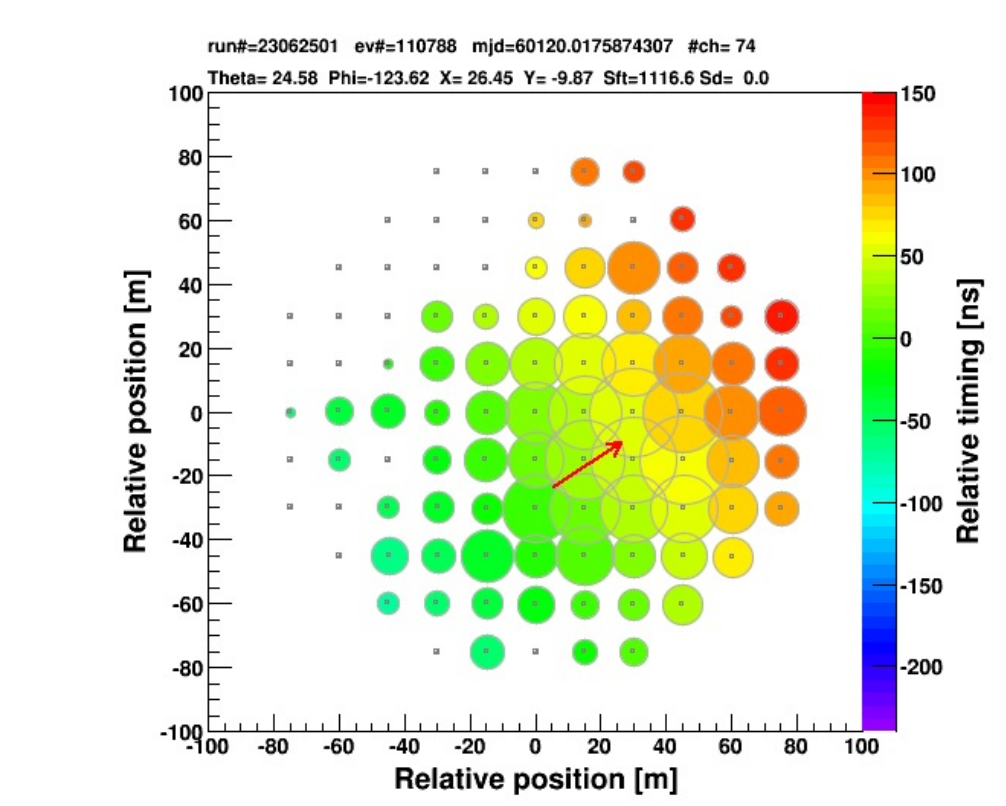
Sub-PeV to PeV photon observations using the new air shower array in Bolivia
T. Sako 10, M. Anzorena 10, E. de la Fuente 4, 11, K. Goto 8, Y. Hayashi 7, K. Hibino 2, N. Hotta 13, A. Jimenez-Meza 12, Y. Katayose 9, Y. Masuda 7, Y. Nakamura 6, M. Nishizawa 3, T. Sasaki 2, M A. Subieta Vasquez 5, T. K. Sako 10, Y. Tameda 1, Y. Yokoe 10
1 Faculty of Engineering, Osaka Electro-Communication University, Neyagawa 572-8530, Japan. 2 Faculty of Engineering, Kanagawa University, Yokohama 221-8686, Japan 3 National Institute of Informatics, Tokyo 101-8430, Japan 4 Departamento de Fı́sica, CUCEI, Universidad de Guadalajara, Guadalajara, México. 5 Instituto de Investigaciones Fı́sicas, Universidad Mayor de San Andrés, La Paz 8635, Bolivia. 6 Institute for Cosmic Ray Research, University of Tokyo, Kashiwa 277-8582, Japan 7 Department of Physics, Shinshu University, Matsumoto 390-8621, Japan 8 College of Engineering, Chubu University, Kasugai 487-8501, Japan 9 Faculty of Engineering, Yokohama National University, Yokohama 240-8501, Japan. 10 Institute for Cosmic Ray Research, University of Tokyo, Kashiwa 277-8582, Japan. 11 Doctorado en Tecnologı́as de la Información, CUCEA, Universidad de Guadalajara, Zapopan, México. 12 Departamento de Tecnologı́as de la Información, CUCEA, Universidad de Guadalajara, Zapopan, México. 13 Faculty of Education, Utsunomiya University, Utsunomiya 321-8505, Japan
Show AbstractPhysics at the TeV scale is explored by colliders, while astrophysical PeV photons are now detected by the air shower array experiments. After the first discovery of > 100TeV emission from the Crab nebula in 2019 by the Tibet ASγ group, recently 43 celestial objects are reported > 100 TeV by the LHAASO group in the northern hemisphere. In this contribution, a new air shower experiment called ALPACA, under con- struction in the Bolivian Andes to explore the southern sky for the first time in the sub-PeV to PeV energy range, is introduced. The prime motivation of ALPACA is to reveal the PeV cosmic hadron accelerators. At the same time, ALPACA is sensitive to astrophysical signals from phenomena beyond the standard model. Possible topics include photons from decaying heavy dark matter surrounding the galactic center, attenuation of PeV photons with starlight, and searches for axion-like particles. We would like to discuss the synergy between the high-energy frontier of astrophysics and physics beyond the standard model.
Fierz identities at the one-loop level
Jason Aebischer 1
1 Physik-Institut, Universität Zürich, CH-8057 Zürich, Switzerland
Show AbstractOne-loop Fierz identities are discussed, together with general basis transformations in Effective Field the- ories at the tree- and one-loop level. To this end, the notion of one-loop shifts is introduced, together with several examples that illustrate the virtues of this method.
Model of the Universe without Dark Matter
Khamis Hassan M.H. 3, 2, Volkova O.A. 3, Evdokimov N.V. 3, Kamalov Yu.T. 3, Kamalov T.F. 3, 1
1 Department of Theoretical Physics, Moscow Institute of Physics and Technology, Moscow Region, Dolgoprudny, 141701, Russian Federation 2 Department of Physics, Faculty of Science, Assiut University, Assiut, 71511, Egypt 3 Department of Theoretical Physics, Moscow Region State University, Moscow Region, Mytishchi, 141014, Russian Federation
Show AbstractAre Dark Matter the result of uncalculated addition derivatives? The need to introduce dark matter dark becomes unnecessary if we consider that, the phenomenon of dark matter is a result of not computing the additional derivatives of the equation of motion. For this purpose, we use higher derivatives in the form of non-local variables, known as the Ostrogradsky formalism. As a mathematician, Ostrogradsky considered the dependence of the Lagrange function on acceleration and its higher derivatives with respect to time. This is the case that fully correspond with the real frame of reference, and that can be both inertial and non-inertial frames. The problem of dark matter and dark energy presented starting from basic observa- tions to explain the different results in theory and experiment. The study of galactic motion, especially the rotation curves, showed that a large amount of dark matter can be found mainly in galactic halos. The search for dark matter and dark energy has not confirmed with the experimental discovery of it, so we use Ostrogradsky formalities to explain the effects described above, so that the need to introduce dark matter and dark energy disappears.
Constraints on the Exotic Spin-dependent Interactions from Magnetometers Data
L. Y. Wu 2, 3, 1, H. Yan 3, 1
1 Key Laboratory of Neutron Physics, Institute of Nuclear Physics and Chemistry, CAEP, Mianyang 621900, Sichuan, China 2 Key Laboratory of Nuclear Physics and Ion-beam Application (MOE), Fudan University, Shanghai 200433, China 3 Key Institute of Nuclear Physics and Chemistry, CAEP, Mianyang, Sichuan 621900, China
Show AbstractThe existence of exotic spin-dependent interactions is predicted by various new physics theories. These in- teractions generate macroscopic forces on polarized spins that can be detected with a magnetometer. The Sun and Moon could be considered mass sources capable of generating such interactions through axion, Z ′ boson, or unparticle exchange. New experimental upper limits on exotic spin-dependent interactions mediated by axions or Z ′ bosons at astronomical ranges are derived by analyzing magnetometer data mea- suring Lorentz and CPT violation. Additionally, the first upper limits on monopole-dipole spin-dependent interactions mediated by unparticles are obtained.
Tri-bimaximal-Cabibbo Mixing: flavour violation in charged lepton sector
Mathew Thomas Arun 1, Anirudhan A. Madathil 1
1 School of Physics, Indian Institute of Science Education and Research Thiruvananthapuram, Vithura, Kerala, 695551, India
Show AbstractThe well understood structure of U pmns matrix mandates a Cabibbo mixing matrix in the first two gener- ations of the charged lepton sector if we assume Tri-bimaximal mixing in the neutrino sector. This ansatz, called Tri-bimaximal-Cabibbo mixing, on the other hand, is ruled out immediately by charged lepton flavour violating decays of mesons. In this article, we aim to show that the resurrection of the theoret- ically well motivated Tri-bimaximal mixing scenario comes naturally within Minimal Flavour Violation hypothesis in the lepton sector. We analyse the flavour violating currents µ → eee, µTi → eTi, π 0 → e + µ − and K L → µ + e − in this scenario and show that the New Physics that generates mixing among the charged lepton could lie within the reach of hadron colliders. Though the most stringent constrain on New Physics is ≥ O( 26 TeV) for maximal coupling, more natural coupling relaxes it to ≥ O( 4 TeV).
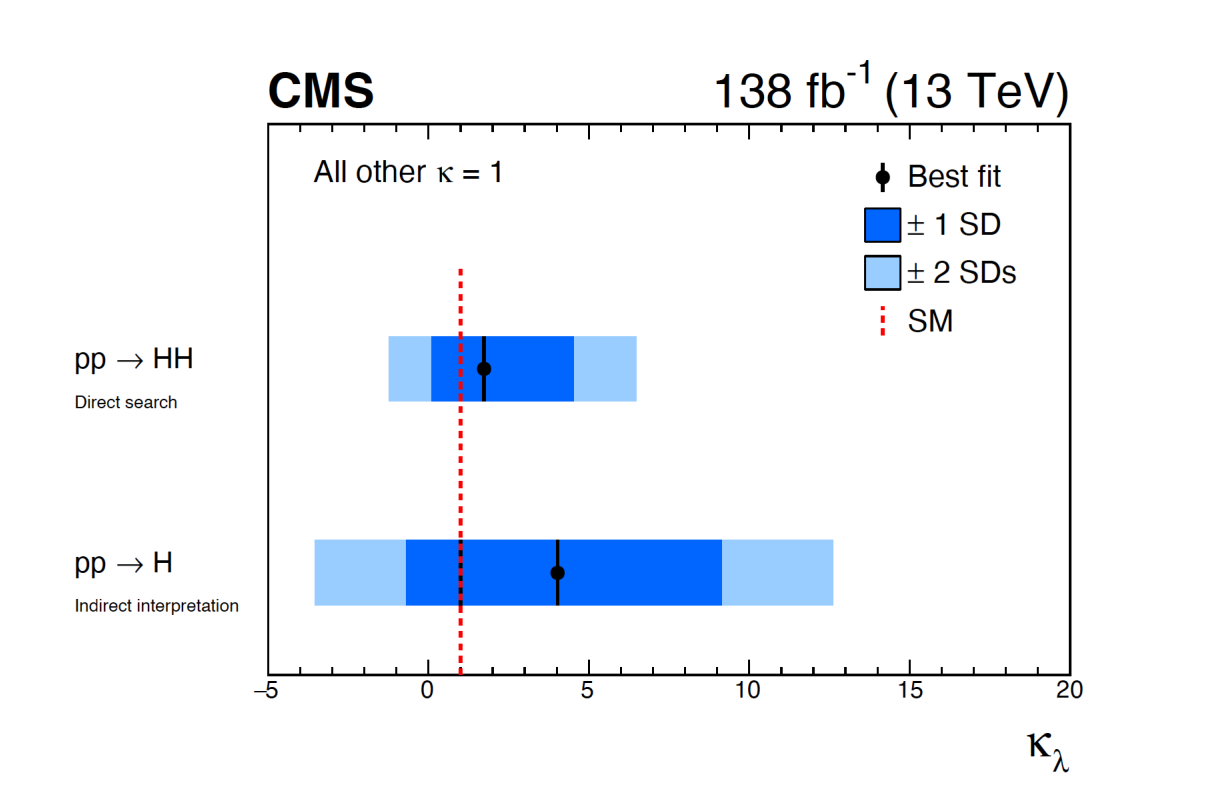
Summary of CMS Higgs Physics
Walaa Elmetenawee 2, 1
1 Physics Department Faculty of Science, Helwan University, Ain Helwan 11795 Cairo, Egypt 2 INFN - Sezione di Bari, Via Giovanni Amendola, 173, 70126 Bari, Italy
Show AbstractSince the discovery of the Higgs boson in 2012, substantial advancements have been achieved in ex- ploring its characteristics. The utilization of extensive data sets has facilitated recent results, enabling not only the determination of the Higgs boson mass and total production cross section in the most sensitive decay channels, but also measurements of fiducial and differential cross sections, as well as searches for rare or exotic processes. The study of the Higgs boson pair production which is fundamental to the study of the Higgs boson self-coupling, received a significant boost, too. These proceedings focus on the latest Higgs physics results achieved by the CMS Collaboration using the entire dataset collected during Run-2 of the LHC, corresponding to an integrated luminosity of approximately 140 fb − 1 .